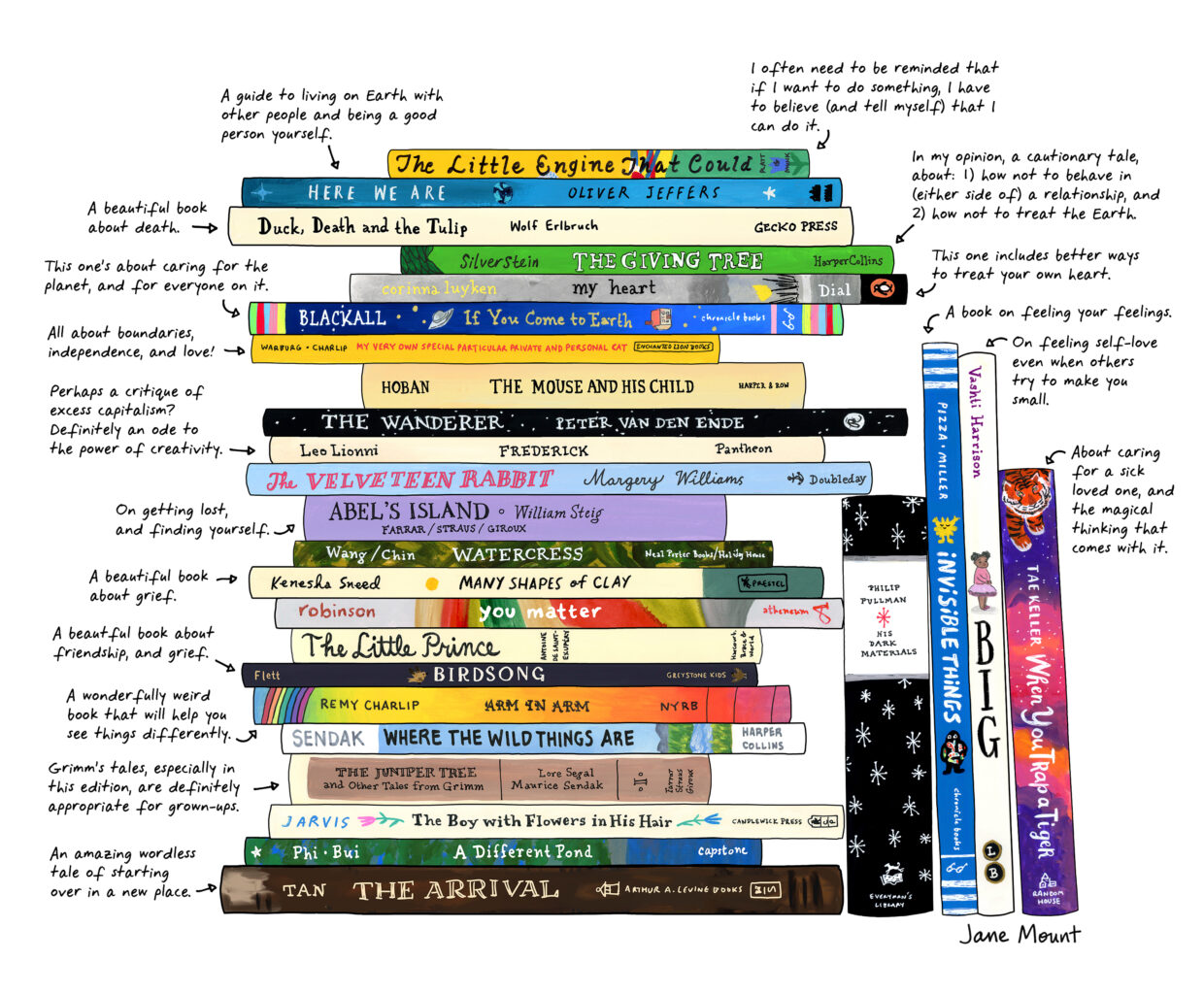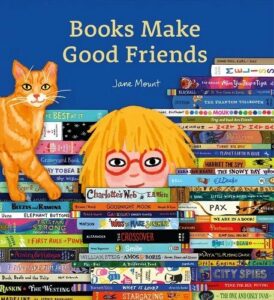I make books about books, and every year hundreds of people commission me to make custom art prints for them or their loved ones, of the spines of the books that changed their lives and made them who they are today. And as a result, I’ve read quite a lot of books—for people of all ages—and spent a lot of time researching which books people love most.
Here’s what I’ve noticed: Even when an adult picks the books, the set of books they pick often includes books they read as children. The books we read as kids are often stick with us more than any others. There is something special about those books you first read for yourself, and those that a beloved parent reads to you. They are the ones you hug to your chest like small animals, trying to get them as close to your heart as you can.

These books are so formative partly because at that age we are very ready to be formed, of course. But there’s also the fact that most stories for children are clear and entertaining, short and memorable, and often address our greatest joys and our deepest fears. And they still have all these excellent qualities when you read them as an adult.
Many of the same things I loved in childhood still bring me great joy (cute furry creatures, feeling seen and loved), and I still have many of the same deep fears and everyday worries (no one gets me, how do I stop feeling scared or sad, and really, who am I?), just in slightly different manifestations. The children’s books I love most tackle the same issues as recent popular self-help and healing books for adults, but with clever plots and beautiful often hilarious illustrations to help the lessons stick in your mind. (Author Katherine Rundell makes this case beautifully in an excellent essay, which you can also buy in book form, called “Why You Should Read Children’s Books, Even Though You Are So Old and Wise.”)
I grew up thinking that we graduate from children’s picture books and go on to read easy readers, then middle grade novels, then young adult fantasy and romance mixed with high-school-English-class-assigned classics, then “genre” fiction, and finally literary fiction, when we are fully sophisticated. Some of us then have kids and return to reading children’s fiction, usually aloud, and rediscover their magic, but perhaps feel a bit weird about enjoying it, since we’re supposed to be “beyond that.”
Children’s books are about connecting us, to others and to ourselves.
But who really wants to get beyond the wonder, curiosity, and thrill we all get from these stories? Don’t you want more magic in your life? There are no book police that will come after you for reading books written with a younger person in mind. (There are, unfortunately, book “police” that will try to keep children from reading books meant for them by banning them from libraries, but that’s a subject for a different essay.)
As a child the world often feels overwhelming, and almost impossible to understand. Books for children recognize that and confirm it’s true. But they then provide hope that if you can be just a little bit brave (even though you’re scared), and just a little bit kind (even though you’re unsure), wonderful things can happen. It turns out that as an adult, the world still often feels overwhelming and very hard to understand. And being brave and kind still produces fantastic results, if you can get yourself to try.
Taking a ten-minute break to read William Steig’s Brave Irene or Jerry Pinkney’s The Lion and the Mouse will be all the reminder you need. Personally, I reread The Velveteen Rabbit often and for several reasons: 1) it keeps the deadly creep of imposter syndrome at bay, because for me the moral of the story is that if YOU believe you’re Real (i.e., a real illustrator, a real writer, a real artist), you ARE Real; 2) I still love the idea that inanimate objects in my life have magical, secret lives beyond my comprehension; and 3) it always brings on a really good cry, the kind that washes away unimportant clutter from your heart. (Relatedly, the author Margery Williams Bianco referred to her work as “imaginative literature,” not just for children but for anyone who still had an imagination.)
Slipping back into a childlike mindset–being ready to entertain new ideas and being open to new ways of seeing and learning–really helps you as an adult, too. If you aren’t convinced you already know all the answers, new approaches can come to you. As a child I always identified with the main character of a story, no matter how different they seemed from me on the surface. I always found a way to connect to them. Is there anything people could use more practice in these days than stepping into the shoes of characters different from ourselves? The world desperately needs more compassion, and as the great Neil Gaiman said, a book is “a little empathy machine.”
And finally, sometimes you just need to feel all the feels. Stories for kids tap you right into an emotional main line. You can cry for the mouse losing his child, or for the loss of Old Dan and Little Ann. You can yelp with justice as Meg defeats It, or when Turtle solves the mystery. Like all stories, at their core children’s books are about connecting us, to others and to ourselves. Books make us better.
__________________________________

Books Make Good Friends by Jane Mount is available from Chronicle Books.